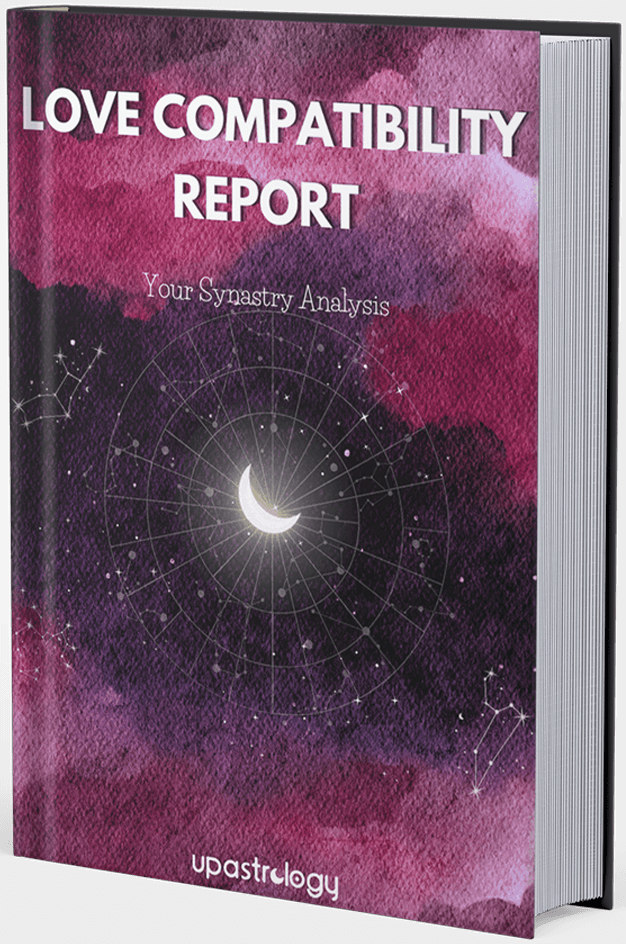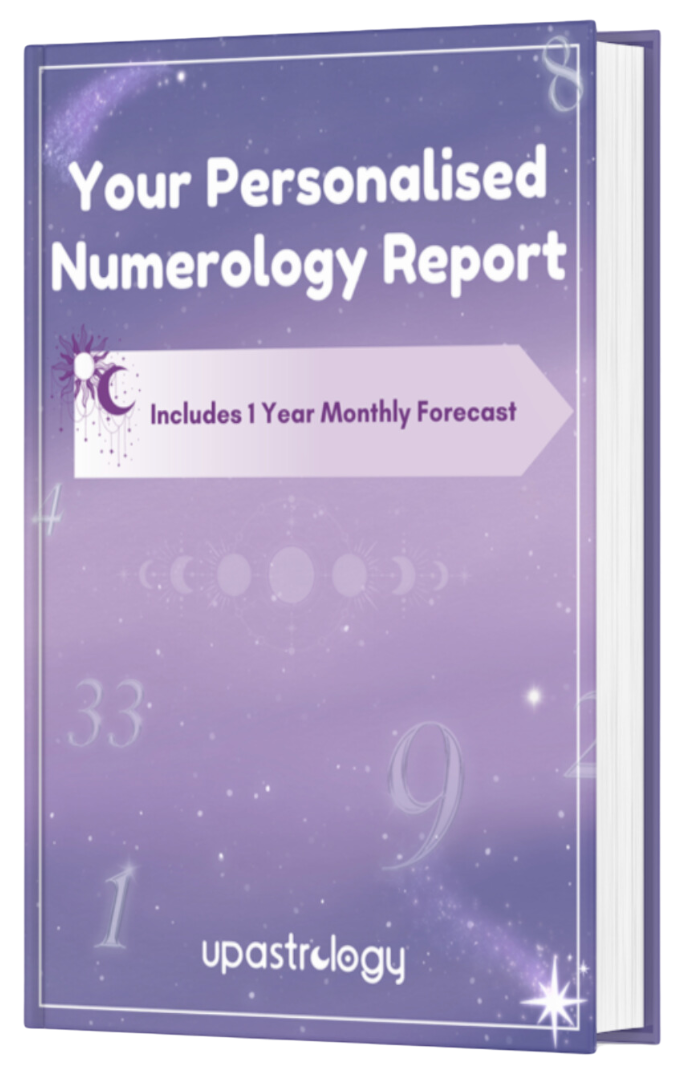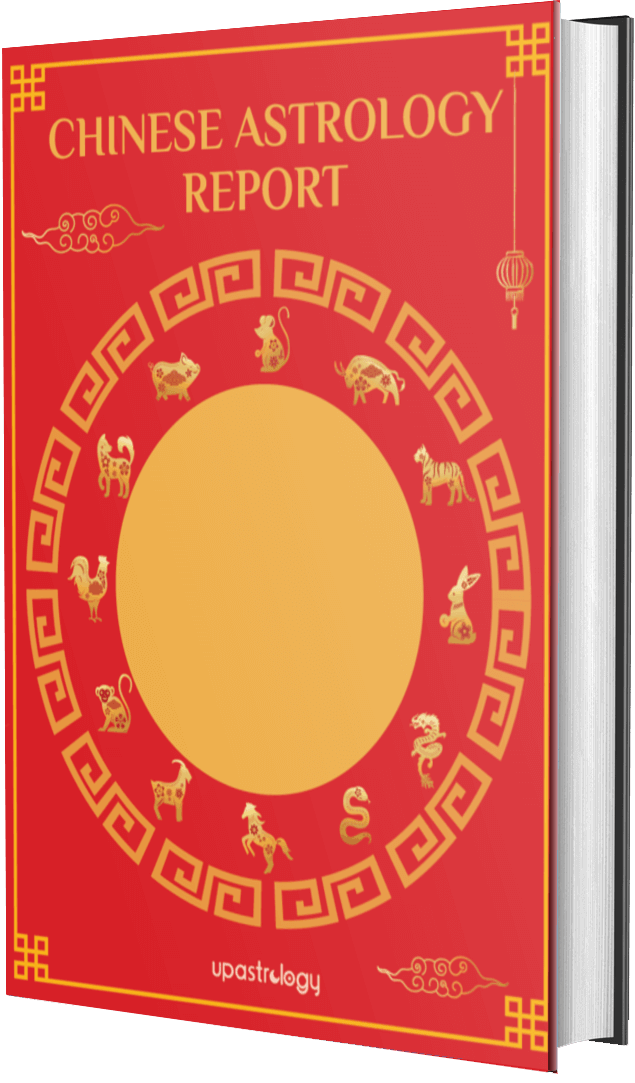Why Are They Not That Into You: Worst Synastry Aspects You Can’t Ignore!

Have you ever found yourself irresistibly pulled towards someone, as if by some invisible force, even when your every rational part advises caution? The allure of a potentially lousy romance—it's a tale as old as time.
But have you ever wondered why it happens the way it does?
If yes, then let Synastry explain to you.
Synastry is a deep, detailed corner of astrology that simplifies the love and relationship complexities and, yes, they also help you decode the red flags in your love life.
So, you finally understand why you are attracted to them.
You’ll know why you choose them over everyone, even when you have to go against every fibre of your being.
We've all heard about magnetic attractions—those intense, almost compulsive connections.
They make zero sense on the paper. But the irresistible attraction you feel towards them has no sense of pen and paper.
Because you're drawn to them like a moth to a flame, even when your gut says, "Maybe not such a good idea."
We all know about a pull so magnetic. Because we’ve all had it… at least once in this lifetime.
But why?
What makes us so attracted to that person that we’re willing to go against every rational thought? Sometimes, we’re even willing to go against the entire world…Why?
Your synastry, also known as Relationship Astrology has some answers that will finally help you understand this push-and-pull dynamic.
Through the synastry chart, you know what makes you click and what could make things go south—way south.
First things first: What exactly is a synastry chart?
A synastry chart is a comparison of your and your partner’s birth chart.
So you can understand your compatibility and relationship dynamics.
From your synastry chart, you can analyze how your and your partner’s planets, houses, and aspects interact with each other.
So, you can understand the strengths, challenges, and soft spots of your relationship.
Your synastry chart helps you find out the sync in your communication styles, emotional connections, and overall compatibility.
Usually, opted by lovers, the synastry report can help people who are still dating, best friends, siblings, and even business partners.
In short- The synastry chart is best for two people who want to understand their bond and work on improving their relationship.
What kind of questions does a synastry chart answer?
A synastry chart is like a cheat sheet for your relationship. It includes all the answers to the questions you might have regarding your love life and relationship.
But, from the perspective of a romantic relationship, it answers real-life questions you've probably typed into a search engine:
"Will I find my soulmate?", "Is he as much in love with me as I am with him?", "Can our marriage last?", "Why do I have commitment issues?" and "What kind of person am I drawn to?"
Is everything you read in your synastry chart true to the T?
A well defined synastry chart like UpAstrology’s can offer some fascinating insights.
But at the end of the day, it all comes down to the choices you makes and the actions you take towards your growth and wellbeing to shape your love lives.
While you rely on the details in your synastry chart, understand one thing: Planets may guide us, but they don't control us.
Interestingly, the synastry chart can also explain even the most mysterious questions about yourself. For instance- Why are you attracted to your partner?
Why are they not into you? Or Why they drive you so crazy…and even why and how they always keep you on your feet and more…
So, according to Synastry, what makes relationships so challenging?
Planets like Mars, Saturn, and Pluto are the suspects behind love's challenges. They're the instigators- the planets that can make a romantic dinner into a door-slamming fight.
But the real roller coaster of emotions happens when you find these planers connected at certain angles like squares or oppositions
So when these planets are not angled right and not everything is right in the relationship- can nothing be done to improve the chances of lasting love?
Not really.
You have to understand that you are only looking at your relationship from one perspective. And it’s not enough to decide the present and the fate of your future together.
There has to be a reason why you are still together.
And your synastry chart will show you those reasons if you have a well-balanced perspective.
Besides, you can still work on improving your relationship.
The synastry chart is not a set-in-stone rule book…
Instead, it is a book of guidelines that is made to bring you and your partner closer together.
Your synastry chart can explain to you the challenges in your relationship.
And along with that, it will also give you a solution to overcome them.
But it is your and your partner’s maturity, willingness and understanding that will help you to accept and overcome those challenges.
But here’s the catch: Your synastry chart can only help your relationship to grow if you and your partner have faith in each other.
Now that you understand what is a synastry chart and how it can help you to work on your relationship, let’s understand why your relationship could not be working out.
Let’s look at the possibility of why are they not into you.
To know that, you have to check if you have any of these unfavourable (or worst) aspects in your synastry chart.
❤️🩹 The Worst Aspects in a Synastry Chart
These unfavorable aspects are the warning signs that may indicate challenges in your love life's astrological landscape.
If you and your significant other are under the influence of multiple difficult aspects, you might need relationship counseling or engage in constructive dialogue.
If you are single but considering having a relationship with someone who you have multiple challenging aspects, then you must be careful.
Sure you are too much in love. But the road ahead could be difficult.
Be mindful and think carefully before taking the ‘You Jump, I Jump’ dive in the ocean of love.
Because the Titanic of your love could really sink.
Before moving forward, don’t ignore these aspects in your synastry chart-
Moon opposite Moon in Synastry
Ever been in a relationship where you vibe on so many levels but just can't seem to get the emotional sync, right? It's like you're two moons pulling the tides of your shared emotional ocean in opposite directions.
This tension might be reflected in your astrological synastry charts as a Moon opposite Moon aspect, and it's akin to having a second moon suddenly appear to counteract Earth's existing moon. Imagine if it's a full moon for you, you're on an emotional high, feeling open and vulnerable.
But for your partner, it's a new moon—emotions low, tucked away. The result? A disruptive tide of emotional misalignment that can shake the foundations of your relationship.
However, there's a silver lining here. Just like a dual moon scenario would bring high tides and spectacular moonlit walks, so can your emotional contrasts.
These differences can challenge you both to be better, more empathetic partners.
You might think of the Moon-opposite-Moon aspect as an obstacle. But treat it as an opportunity to navigate complex emotional waters together.
Learn to appreciate the ebb and flow of your unique emotional cycles. And you may just find that the rhythm you were missing. Give your relationship some team efforts and time. So that, your hearts can finally find the dancing beats.
Mercury opposite Mercury in Synastry
Ever been in a conversation where you and your partner seem to be speaking two entirely different languages? You both might be perfectly articulate, but it's as if your words cross parallel universes, never intersecting.
If you've turned to astrology for answers, this dilemma might be reflected in a Mercury opposite Mercury aspect in your synastry chart. This aspect is like tuning into two different radio frequencies—both might be playing great music, but they're not harmonizing.
Mercury governs how we communicate, think, and process information. When Mercury opposes Mercury in a relationship chart, it creates a fascinating but complex dynamic. When it opposes another Mercury in synastry, imagine it like two news anchors from rival channels trying to cover the same story: one might prioritize the emotional impact. And at the same time, the other is all about the facts.
You both have your own styles, modes of expression, and 'headlines,' so to speak. The challenge is finding common ground where your intellectual worlds can coalesce.
You might think this is a disastrous snag;
But if you look at it from the other way around, this can also be a growth opportunity.
Think about it: You can enrich your viewpoints by listening to the other side like two skilled debaters. Your discussions will never be dull, and you might find that these oppositional Mercury aspects make you better communicators in the long run.
Just like a debate can be a crucible for sharper thinking, navigating this opposition can turn you into a more nuanced conversationalist. Remember, life's not about avoiding challenges; it's about using them to grow.
Venus Square Ascendant in Synastry
Ever had a relationship where you felt the chemistry but found it difficult to fit into each other's worlds? A Venus square Ascendant aspect in your synastry chart might be the invisible barrier you're bumping into.
Venus governs love and attraction here, while the Ascendant is like your social calling card—your first impressions and how you naturally navigate new situations. One of you might be all about keeping up appearances, caring about what others think, and sticking to traditional social norms.
Meanwhile, the other half of this dynamic duo is the proverbial wild card—unpredictable, always coloring outside the lines and making waves in social situations.
For example, imagine a scenario where the first person values tradition and prefers to maintain a conservative image in social settings. On the other hand, the second person may have a more rebellious nature and enjoy pushing boundaries.
These differences in personal expression and social behavior may lead to misunderstandings and disagreements, requiring open communication and compromise to find common ground. This Venus square Ascendant aspect isn't the end of your love life, though. If anything, it's a wake-up call—a sort of emotional boot camp pushing you both to level up empathy and understanding.
But this Venus square Ascendant aspect isn't the end of your love life, though. If anything, it's a wake-up call—a sort of emotional boot camp pushing you both to level up empathy and understanding.
Yeah, your social styles may clash, but that friction can also spark deeper conversations about what you both value and how you want to be seen by the world.
Sun Conjunct Sun in Synastry
Sun Conjunct Sun is often seen as a marker of remarkable compatibility, drawing two individuals towards a magnetic connection. However, this intense resonance comes with complexities, most notably the risk of heightened ego clashes and power struggles.
Both parties might find themselves competing for the spotlight, given that their Sun signs amplify both shared strengths and mirrored weaknesses.
The potential pitfalls of this synastry aspect require a careful approach.
With Sun Conjuct Sun aspect, both you and your partner need to work on your emotional intelligence.
Both of you should recognize when your egos are clashing.
Step back and understand when you should stroke the other one’s ego and when you should help them see through it.
For which, you need to be effective in your communication. Express and explain and let your partner do the same. But be careful not to step on each other while doing so.
Be empathetic. Be self-aware and be willing to compromise.
While the identical Sun signs offer a deep understanding of each other, they also require that each person remain aware of their unique attributes and journeys.
In sum, a Sun Conjunct Sun aspect promises intense attraction and challenges that demand maturity and emotional savvy. Your relationship presents a paradoxical opportunity: You have to build a deeply resonant relationship while still preserving each other’s unique identity.
Venus opposite Mercury in Synastry
The Venus-Mercury opposition in astrological synastry is a nuanced and potentially challenging aspect that puts Venusian emotional needs against Mercurial intellectual interpretations. Rather than viewing this opposition as a hindrance, it should be regarded as an opportunity for profound relational evolution.
Venus, representing emotional fulfillment, and Mercury, symbolizing cognitive processes, invite couples to navigate their differing perceptions around love and partnership.
This opposition serves leads you to deep exploration and growth. It asks both individuals to go beyond superficial understandings and seek a balanced perspective on love and domesticity. The aim is not to find a unilateral solution but to integrate contrasting viewpoints into a harmonious relationship.
This involves mutual enrichment, where each partner learns from the other's unique approach. Couples can build a more balanced, cooperative, and harmonious relationship by earnestly engaging with this astrological challenge.
The tension inherent in this aspect can catalyze transformative growth, leading to a partnership characterized by comprehensive understanding and mutual evolution.
In summary, while the Venus-Mercury opposition may appear daunting, it holds the latent potential for deep relational enrichment. It urges couples to embrace the differences that make their connection uniquely rich and balanced.
Moon opposite Mercury in Synastry
Imagine a couple—Person A with a prominent Moon placement and Person B with a significant Mercury placement in their natal charts. Person A feels emotionally overwhelmed and wants to talk to Person B about it. Person B instinctively adopts a Mercury-ruled analytical stance as they start discussing their feelings.
They start dissecting the problem, offering logical solutions, or questioning the "validity" of such emotions. While the intent is to help, this analytical approach could make Person A feel their feelings are trivialized or misunderstood. Here, the Moon-Mercury opposition is evident.
Person A, influenced by the Moon, seeks emotional understanding and validation. Person B, governed by Mercury, resorts to intellectual analysis. The challenge is to bridge this emotional-intellectual divide.
Instead of seeing this as an impasse, both individuals can view it as an opportunity for growth. Person B could make an effort to tap into emotional intelligence, offering empathetic responses before jumping to logical solutions.
Similarly, Person A could try to understand that Person B's analytical approach is their way of showing care and concern. By acknowledging this astrological tension and working collaboratively to harmonize these divergent approaches, the couple can develop a relationship that honors emotional depth and intellectual engagement.
In essence, the Moon-Mercury opposition serves as a catalyst for each partner to broaden their understanding and methods of communication, thereby enriching the relationship as a whole.
12th House Overlays in Synastry
The Twelfth House in astrology, often termed the "House of the Unconscious," is a mysterious and elusive domain. When planets reside here in a natal chart, they manifest as subtle, almost indefinable psychological tendencies rather than overt behaviors.
In synastry—the comparison of two individuals' charts—Twelfth House planets can deepen a relationship by adding an unspoken, almost mystical connection. For instance, consider a couple where one partner has Venus in their Twelfth House.
This partner might struggle with expressing love openly but feels a profound, almost psychic, emotional bond. Even without understanding why, the other partner may sense this depth and be inexplicably drawn to it.
Yet, this Venus placement could also result in hidden fears or insecurities about love, manifesting as inexplicable bouts of sadness or anxiety for the individual.
Twelfth House planets add a complex layer to individual psyches and relationships. While they present hard-to-articulate challenges, understanding their subtle influence can lead to deeper emotional bonds and self-awareness.
Venus opposite Saturn in Synastry
Venus Opposite Saturn aspect is often viewed with a sense of trepidation, given its reputation as a challenging or "hard" aspect. Venus, the epitome of love, beauty, and attraction, starkly contrasts Saturn, the planet emblematic of responsibility, discipline, and, at times, emotional restraint. This aspect can manifest as a tension-filled dynamic where the Venus person perceives the Saturn person as emotionally withholding or aloof.
Conversely, Saturn individuals may feel like they wield emotional control, leading to an imbalance in the natural flow of affection and intimacy.
Consider a couple where one partner's Venus opposes the other's Saturn. The Venus person may long for spontaneous romantic gestures and emotional openness, while the Saturn person may prioritize stability, possibly viewing emotional exuberance as imprudent. This can result in a relationship characterized by a palpable emotional distance.
However, it's crucial to note that this aspect is not a categorical relationship to the death sentence. On the contrary, it offers an invaluable opportunity for growth. The Saturn person's maturity and stability can provide a grounding influence for the Venus person's more whimsical approach to love.
In summary, while Venus Opposite Saturn presents inherent challenges, it also promises profound relational growth through concerted effort and emotional investment.
💓 What’s your Venus Sign? 💓
Find Out Where Venus Resides for You and Your Partner Right Here!
Mars opposite Mars in Synastry
The Mars Opposite Mars Synastry aspect represents a complex and often challenging dynamic within a romantic relationship. In this scenario, one partner's Mars placement gains prominence while the other's diminishes, depending on their zodiac signs. For example, a Mars in Capricorn—its exalted position—would ostensibly dominate a Mars in Cancer, leading to an inherent imbalance in how each partner asserts.
This asymmetry can manifest in various ways: the stronger Mars individual often becomes the aggressor in confrontations, while the weaker Mars partner may resort to passive-aggressive tactics.
Such diverging modes of expression can lead to heightened conflicts, particularly if the more robust Mars is aligned with the masculine energy in the relationship and the weaker Mars corresponds to the feminine energy. Over time, this can create a volatile dynamic where the more potent Mars feels obstructed by the weaker Mars, and vice versa.
However, it is essential to recognize that this aspect is not a definitive harbinger of relationship failure. The stronger Mars individual could exercise restraint and offer space for the weaker Mars to assert themselves.
Simultaneously, the weaker Mars could cultivate the courage to articulate their needs and desires. While Mars Opposite Mars Synastry brings inherent challenges, it also offers a profound opportunity for mutual growth and relational depth, provided both partners engage in open communication and compromise.
Synastry Gloassary
- Use our free Synastry Chart Calculator to see how you and your partner are compatible within minutes. This calculator will also help you to find out if you have any of these difficult synastry aspects ot not.
- When deciding the present and future of your relationship, looking at your Venus signs is also important. In that case, find out your and your Venus signs.
- There’s so much depth when we have you look at good and bad aspects of synastry. You can explore all the important details.
- Understand your synastry is so much more than just looking at the good and the bad. It is also important to understand if all the other areas of a relationship- such as communication, compatibility, chemistry, safety needs and more are met or not. You can know all of it in a detailed synastry report by UpAstrology.
- Now that you know about the worst aspect of synastry, know if your relationships is karmic or not.
- Your synastry chart holds deep secrets. It can tell you many things. For one- it can tell you about the sexual attraction between you and your partner. Use this guide to find out how.
Conclusion #
In conclusion, "In every challenge lies an opportunity" is particularly apt when considering the so-called "worst aspects" in synastry. These challenging synastry patterns are not some big, impossible roadblocks but a path for deep transformation.
So, when you see any of these challenging synastry aspects, don’t think of your relationship as an inevitable failure.
Instead, look at them as an opportunity to expand your understanding and emotional depth. The true essence of a resilient relationship lies not in astrological ease but in navigating complexities with conscious intent.
Share on:
Explore More
Astrology
The Strength and Beauty of Parent-Child Relationship: Explore the Astrological Angle
Numerology
Understand the Number Play of Your Birth Number in Your Life
Birth Chart
How to Understand Your Emotional Nature with Astrology
Featured Blogs

Synastry
Swipe Right: Matching Dating Profiles with Astrological Compatibility

Jupiter Transit
Jupiter's Journey: The Super Opulence of Its Transit from 2023 to 2024

Zodiac Sign, Law of Attraction













